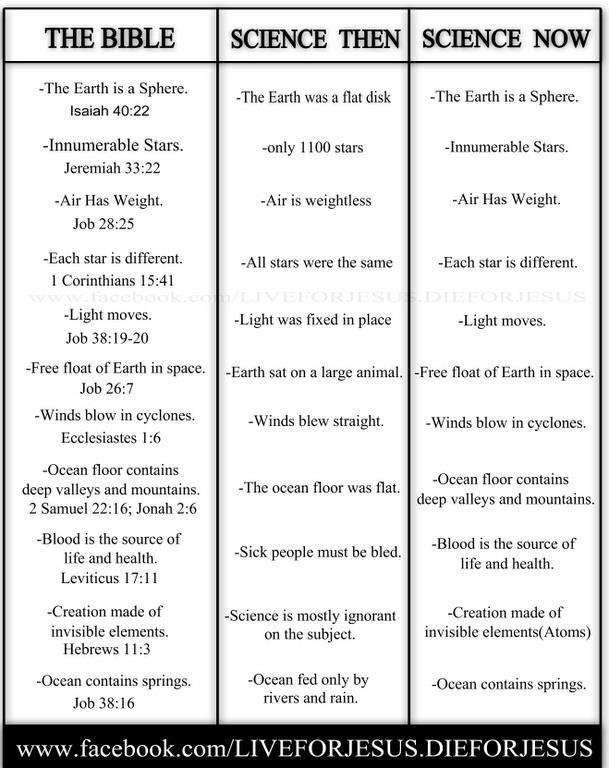A Facebook friend shared this image:

There is a lot here that is problematic. Let’s just focus on one example, and begin with the very first claim, namely that the Bible “foresaw” the near-spherical shape of the Earth. The truth is that the Hebrew Bible uses the term circle – in other words, it says the Earth is a disk, precisely the incorrect view that is attributed to the unnamed others in the middle column. If one wished to say that they were all right, and all “meant” sphere when they wrote “circle,” that would at least be fair. But to say that the Bible is right and the others are wrong is simply dishonest.
The claim is problematic from another perspective. The Bible also refers to the corners of the Earth. If it had turned out that the Earth was a cube rather than a sphere, those who wanted to claim that the Bible is prescient regarding science would be emphasizing the accuracy of its mention of corners and the metaphorical status of its use of “circle.” The evidence can be made to fit any outcome, suggesting that it isn’t prescient at all – it is simply flexible enough that modern interpreters who wish to can find what they want to there, if they are willing to sufficiently disregard the meanings of words and of the text in its historical context.
All that is being done in the image above is to latch on to imagery that is similar to what modern science says and make much of it, while treating what doesn’t match as metaphor. This approach shows no respect to the Bible as what it really is – a collection of works written by and for people in another time, when modern scientific knowledge was neither a concern nor available.
And of course, calling the views that anyone held millennia ago “science then,” as the graphic does, is itself misleading.
As for the other claims on the chart, one or two of them seem to have been true about some ancient cultures other than Israel, but were by no means universal, while other claims about what other cultures believed do not correspond to any sources that I am familiar with. Since no references to primary sources are provided, one can’t fact check its claims – which is presumably how the person who made it wanted it to be.
I’d guess that the person who made the image was a Christian. But I could well imagine an atheist making a chart like this, posting it on Facebook, waiting for some gullible Christians to fall for it and spread it, and then laughing and pointing out the errors. And if one can equally imagine a foolish and poorly-informed Christian or a clever and well-informed atheist making the same image, doesn’t that suggest that making such images, if you are a Christian, is probably a bad idea?












